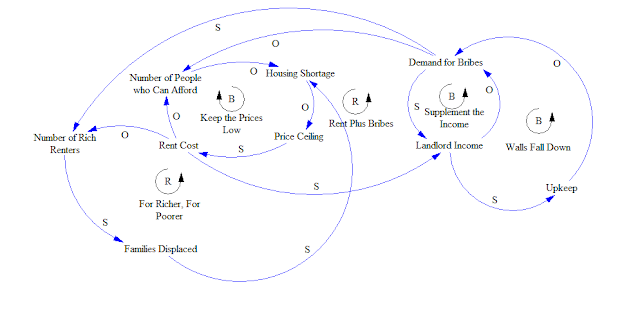Problem Narrative
With advancements in technology and medicine, the problem of overpopulation has become a reality throughout the world. This has even become true in the United States. One such location is Las Vegas, NV. The population in Las Vegas has increased from under 200,000 to nearly 1,600,000 in just the forty years between 1960 and 2000 (see graph below). While nature used to be harsher on the human population in terms of survival, it seems humanity is slowly exacting its revenge by creating harsher conditions for nature to achieve its purpose. As a result, a different set of conditions have arisen to make it hard for the human race to survive.
Behavior Over Time
Some variables in the problem of Las Vegas's overpopulation include the tourism industry, living rates, unemployment rates, and availability of water, among others. This issue has far-reaching contributors and impacts.
Relevance of a Systems Viewpoint
The issue of overpopulation can be observed very effectively from a systems viewpoint. First, it is clear that population growth covers a long time horizon as the human population has fluctuated over an extremely long period of time, and Las Vegas's population has greatly increased over the last fifty years. Second, many actors have an impact on population growth, and therefore, overpopulation. Some of these actors include tourists, entertainment industry workers, residents, and employers. Third, policy resistance and policy debates seem to go hand-in-hand on this topic. Housing prices have gone down the drain in the last few years but that has not deterred people from moving to Las Vegas. Despite officials' calls for limited water, residents and tourists continue to overuse the resources of the area. Lastly, influx and outflow of tourists, residents, and employees show evidence of feedback dynamics. The influx of tourists is also an outflow when their vacations are finished - demonstrating a balancing feedback and the lowered cost of living lead to more people moving to Las Vegas and lead to a reinforcing feedback.
Study Objective and Questions to be Addressed
For this study, the causes of overpopulation in Las Vegas and how to counteract its negative effects (and how that will help policymakers find solutions) will be addressed. Some of the questions that will be asked and hopefully answered will include the following: Is there one factor that has had the most impact on population growth in this area? Are there many policies that have attempted to address this problem or has the problem even been observed and noted? What can be done to help reduce this problem? Hopefully, creating and using systems dynamics, causal loop diagrams, and simulations will help us discover the answers to these questions.
Dynamic Hypothesis
The first reason for some of Vegas's overpopulation problems lie in its dependence on the tourist industry. The following loop demonstrates how tourism plays a role in the city's growth and sustenance.
As can be seen in the above CLD, as the tourist industry brings in more customers, it creates more jobs for residents. The tourism industry as a booming business and the jobs that business create are intended consequences in this system. No town wants to go extinct. These added jobs then invite more people to move to Vegas, as shown in the following diagrams.
As more residents move to the Las Vegas area, water availability goes down. This would invite fewer people from moving here. However, there would likely be a delay between scarcity and desirability owing to the fact that many residents might not realize the scarcity right away. The scarcity of water in the area is an unintended consequence of the tourism industry that leads to more residents in the Vegas area.
Now, with the first two loops and a new loop added in, we can see that many of the variables in this diagram have something to do with the residents of the area. An increase in residents decreases the amount of water and the amount of jobs in the area. However, with more people in the area, the tourism industry is booming and more jobs are created - leading to more people seeing their opportunity and moving. The rise in unemployment is another unintended consequence in this system.
Now, finally, we have the full causal loop diagram for this issue, with at least the most visible factors that are connected to overpopulation. This last loop is less necessary, but as gambling is a very large part of the tourism industry in Las Vegas, I felt it needed to be included. The money coming in from the gambling business is an intended consequence. Also in this final diagram is the cost of living variable as exogenous. The other variables in the diagram did not seem to particularly affect the cost of living, but the cost of living affects how many people have a desire to move to Las Vegas.




